Campus
- Downtown Toronto (St. George)
Areas of Interest
My research interests include synthetic organic chemistry and chemistry education. Some of my main goals in the classroom and teaching laboratory are connecting organic chemistry to real-world applications including modern research practices. I work towards this goal by incorporating classroom activities and laboratory experiments that include discovery-based learning objectives such as:
- Exploration of research methods and techniques
- Problem solving
- Critical thinking
- Collaboration with peers
- Exposure to real-world applications
This career goal came into practice when I realized that students (particularly ones in introductory courses) often have difficulty identifying how course material can be utilized in the world around them. Exposing students to the ubiquitous nature of chemistry in their everyday lives, research, and industry, can enhance student learning by demonstrating the relevancy and purpose of course content. For example, in some of my courses, students use reactions described in class to synthesize a variety of well-known active pharmaceuticals. In addition, I have designed and implemented several new laboratory experiments that challenge students with research scenarios. For example, in one of my courses, students work together to optimize a new reaction and then use their findings to explore the scope of that transformation – both of which are crucial steps in understanding the utility of a synthetic reaction! The purpose of these new experiments is to provide students with a unique research-based learning experience, which can provide a much more stimulating learning environment compared to traditional recipe-style laboratory experiments. In addition, green chemistry principles have been implemented into many of the experiments that I have designed and implemented, as sustainability is a very important element to any modern chemical application.
In the classroom, I also try to highlight course content in interesting ways. For example in an introductory course, I have implemented “Chemistry Connections” slides, which feature interesting applications of the lecture material. When introducing carboxylic acid derivatives for example, I highlight the history and function of penicillin antibiotics. This innovative initiative inspired a successful activity called the “Chemistry Connections Challenge” where students apply course content in creative ways (see publication below). Organic chemistry is an exciting field of science and I think it is essential to incorporate relevant examples from nature and chemical research in order to highlight the applicability of course material.
The work towards these goals would not be possible without the help of talented undergraduate and graduate students. I have had the pleasure of working with wonderfully ambitious and creative individuals within several programs including the Research Opportunities Program (CHM299Y), the Chemistry Teaching Fellowship Program (CTFP), and as volunteers. Many undergraduate and graduate students working with me over the years have designed and developed novel organic laboratory experiments, new tutorial and effective writing programs, and created interesting course resources
including instructional videos for students (i.e. introductory lab techniques, using SciFinder Scholar, etc.), as well as creating databases for instructional purposes (i.e. spectral database, mechanistic problems, etc.). The work that has been accomplished through these collaborations have impacted several courses and as such, has enhanced the quality of instruction in the department and has created a much more stimulating and rewarding learning environment for countless students.
If you are interested in joining forces with me in a
CHM299Y, CTFP, or volunteer basis, please contact me!
Recent Publications
A Systems Thinking Department: Fostering a Culture of Green Chemistry Practice among Students. Dicks, A. P.; D’eon, J. C.; Morra, B.; Chisu, C. K.; Quinlan, K. B.; Cannon, A. S. J. Chem. Educ. ASAPs
Using Retrosynthetic Graphic Organizers and Molecule of the Week Activities in Organic Chemistry Tutorials. Le, C. M.; Morra, B. J. Chem. Educ. 2019, 96 (8), 1640-1645
The Chemistry Connections Challenge: Encouraging Students to Connect Course Concepts with Real-World Applications. Morra, B. J. Chem. Educ. 2018, 95 (12), 2212–2215
The Chemistry Teaching Fellowship Program: Developing Curricula and Graduate Student Professionalism. Kim, K.; Rackus, D.; Mabury, S.; Morra, B.; Dicks, A. J. Chem. Educ., 2017, 94 (4), 439-444
A First-Year Chemistry Undergraduate “Course Community” at a Large, Research-Intensive University. De La Franier, B. J.; Diep, J.; Menzies, P. J. C.; Morra, B.; Koroluk, K. J. and Dicks A. P., J. Chem. Educ., 2016, 93 (2), 256–261
Solvent-Free Aldol Condensation Reactions: Synthesis of Chalcone Derivatives. Tang, C.; Fossella, J. and Morra, B., Comprehensive Organic Chemistry Experiments for the Laboratory Classroom. Eds. Afonso, C. A. M.; Candeias, N. R.; Simão, D. P.; Trindade, A. F.; Coelho, J. A. S.; Tan, B. and Franzén, R., Royal Society of Chemistry, 2016; pp 331-334
Recent Progress in Green Undergraduate Organic Laboratory Design. Morra, B. and Dicks, A. P., Green Chemistry Experiments in Undergraduate Laboratories, Eds. Fahey, J. T and Maelia, L. E., American Chemical Society, ACS Symposium Series, Volume 1233, 2016, pp 7-32
Green Chemistry Teaching and Outreach at the University of Toronto. Dicks, A. P.; Morra, B.; Hoch, L. and Mastronardi, M., Science Education Research and Education for Sustainable Development, Eds. Eilks, I.; Markic, S.; Ralle, B., Shaker Verlag: Aachen, Germany, 2014; pp 103-112


